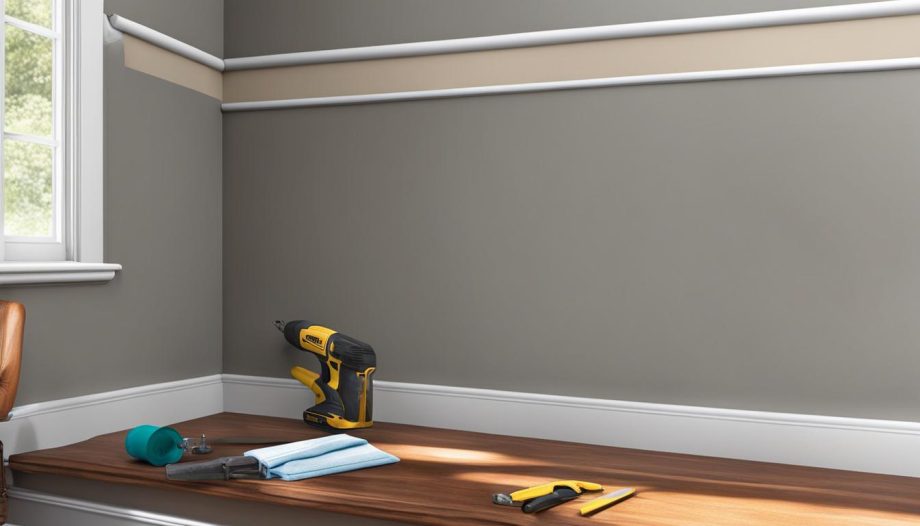Enhancing your outdoor sanctuary can be as simple as creating your very own DIY garden path. Not only does it increase the charm and accessibility of your garden, but it’s also an incredibly satisfying project that can be accomplished over a weekend. Garden path ideas are plentiful, and with a focus on natural, casual landscaping, your new path can look as though it was designed by nature itself.
A serene garden path weaving through lush greenery and colorful flowers. The path is made of rustic stone pavers with moss and small plants growing in between them. The pathway curves gently, leading the viewer’s eye deeper into the garden. Rays of golden sunlight filter through the leaves overhead, casting dappled shadows on the ground. A bird bath and a small bench are nestled nearby, inviting the viewer to take a moment of quiet contemplation amidst the beauty of nature.
With a few essential tools and some creativity, you can embark on garden path landscaping that will create a seamless blend between function and form. From selecting the perfect materials to considering the overall garden path design, each step brings you closer to a picturesque walkway that invites tranquility and beckons exploration.
Inexpensive Materials for Your Garden Path
Creating a picturesque and durable garden path is achievable on any budget when you select the right materials. Varied garden path materials not only affect the functionality and maintenance of your pathway but also its aesthetic appeal and harmony with the surrounding landscape. Here, we explore several types of garden paths that offer beauty on a budget.
Gravel is a staple for cheap DIY garden path ideas, known for its ability to provide excellent drainage while maintaining a crisp, clean look. With a variety of colors and sizes, gravel adapts well to different garden styles and requires little ongoing care beyond occasional weeding.
For a softer underfoot experience and a more natural appearance, wood chips are a fantastic option. They’re one of the most affordable garden walkway materials and can easily be replenished as needed. While wood chips are comfortable and pleasing to the eye, they’re less suitable for pathways that intersect with mowing areas or frequently-traveled barefoot routes.
Reclaimed bricks offer an eco-friendly solution, repurposing materials with historical charm. They can be laid in diverse patterns, offering a variety of designs for personalized garden paths. Timber decking, too, is a viable alternative, especially in pre-cut squares for straightforward installation without extensive DIY skills.
To maximize your budget and customization, consider combining different materials. A pathway interspersed with pavers, stones, and gravel can significantly cut costs while delivering a bespoke aesthetic that complements your garden’s look.
Here’s a quick guide to the characteristics of popular materials used in garden paths:
| Material | Pros | Cons | Best Use |
|---|---|---|---|
| Gravel | Durable, good drainage, low maintenance | Can scatter, not suitable for snow removal areas | Formal gardens, high traffic areas |
| Wood Chips | Affordable, natural appearance | Decomposes over time, not ideal for walking barefoot | Informal gardens, areas away from grass that requires mowing |
| Reclaimed Bricks | Rustic charm, eco-friendly | Irregular sizes may make installation challenging | Paths with character, cottage-style gardens |
| Timber Decking | Structured look, easy to work with | May require treatment for longevity | Elevated paths, contemporary spaces |
By thoughtfully selecting the material that best aligns with your garden’s needs and your personal style, you can construct a garden path that not only saves money but also adds value and charm to your outdoor living space.
Step-by-Step Garden Path Construction
Embarking on garden path DIY can enhance your outdoor space both functionally and aesthetically. Whether you’re creating gravel walkways or mulch paths, this guide outlines the essential steps and DIY project tools needed for garden path landscaping. With a focus on practical tips for preparing for garden walkway, establishing a robust garden path foundation, soil preparation for paths, correct edging for garden paths, and selecting the right garden path materials, you’ll be equipped to design and construct various types of garden paths with confidence.
Gathering the Necessary Tools
Assembling the right arsenal of tools paves the way for efficient garden path construction. To begin, a robust drywall saw will enable precision cutting during the project. A sturdy garden rake is essential for smoothing the foundation, while a reliable spade is indispensable for uprooting sod. To transport materials effortlessly, a wheelbarrow or dolly is a must-have. Compacting the pathway’s underlay requires a solid tamper, and a garden trowel plays a critical role in executing the finer details of this project. Remember, proper preparation and collecting these essential DIY project tools will streamline the building process.
Preparation: Clearing and Measuring Your Space
Initiating garden path DIY calls for meticulous preparation. Begin by removing any existing sod. For long pathways, a motorized sod cutter provides efficiency, but for smaller areas, a simple garden spade is sufficient. Next, consciously measure and define the pathway’s boundaries, selecting proportionate edging that rises above the path’s surface to promote a polished look. Employ a cut spacer stick to maintain consistent width and parallelism. After the groundwork is done, applying landscape fabric on the path’s bed will combat weeds and subtly separate your path from the existing soil.
Laying the Foundation: Tips for Soil and Edging
Constructing a stable garden path foundation is fundamental. Proper soil preparation for paths encompasses leveling the ground and compacting it to ensure a solid base. Selecting the right edging anchors the path materials and forestalls their spillage into the garden. Ideal choices range from pliable plastic to steadfast steel, each offering unique aesthetic and practical advantages. For instance, robust metal edging is particularly effective for both mulch paths and gravel walkways.
Material Selection: Gravel, Mulch, and Beyond
In the garden path materials selection phase, both gravel and mulch are standout, economical options. Gravel paths boast durability and ease of maintenance but choose wisely for snowy regions as gravel can spread into lawn areas. Conversely, mulch paths are gentle on the wallet but require occasional topping due to natural decomposition. Among mulches, cocoa bean, cypress bark, and wood chips are prevalent selections. Aim for finer crushed gravel for comfort and stability underfoot. Opt for crushed stone if heavy garden traffic is anticipated to ensure a resilient path capable of supporting wheelbarrows.
Designing a Garden Path That Blends In
When it comes to garden path design, merging functionality with the natural beauty of your outdoor space is key. A well-thought-out path not only guides you through the garden but can offer sensory and visual enjoyment. Whether you’re aiming for a garden walkway that serves as a pragmatic route or a picturesque trail, consideration of the path’s form and materials will ensure it integrates seamlessly into the natural landscape, enhancing the overall aesthetic of your outdoor haven.
Choosing the Right Path Shape: From Straight to Curvy
Outlining the garden path ideas that best suit your space begins with deciding on the right shape. Straight garden walkways convey a clean, formal appeal and enforce purposeful movement within the garden, excellent for sections that demand a utilitarian approach. For those desiring a more immersive experience, curvy natural garden walkways invite a leisurely pace, giving the illusion of discovery with each bend. Use a garden hose to sketch out the potential path, experimenting to find the most fitting contour that complements your yard’s organic structure.
Adding Stepping Stones for a Natural Aesthetic
The inclusion of stepping stones is a simple yet transformative garden path idea, contributing a natural touch to the course of travel. Placed at just the right intervals for easy walking, these natural garden path elements can be fashioned from various materials such as rustic flagstone or sleek concrete patio blocks. Each stone can serve as a minuscule platform, heralding the next stretch of your outdoor journey and lending a sense of rhythm and intention to your garden design.
Decorative Edging to Enhance Your Path
Decorative pathway borders are not merely functional — they’re a cornerstone of garden path edging and materials selection. From the unassuming charm of plastic strip edging to the upscale refinement of stone, choosing the right border can elevate a simple footpath into an elegant feature of your garden walkway design. For those seeking solidity and style, the investment in brick or concrete can pay off with a pronounced, lasting edge, while the more budget-conscious might lean towards landscape timbers for an effective yet affordable finish.




